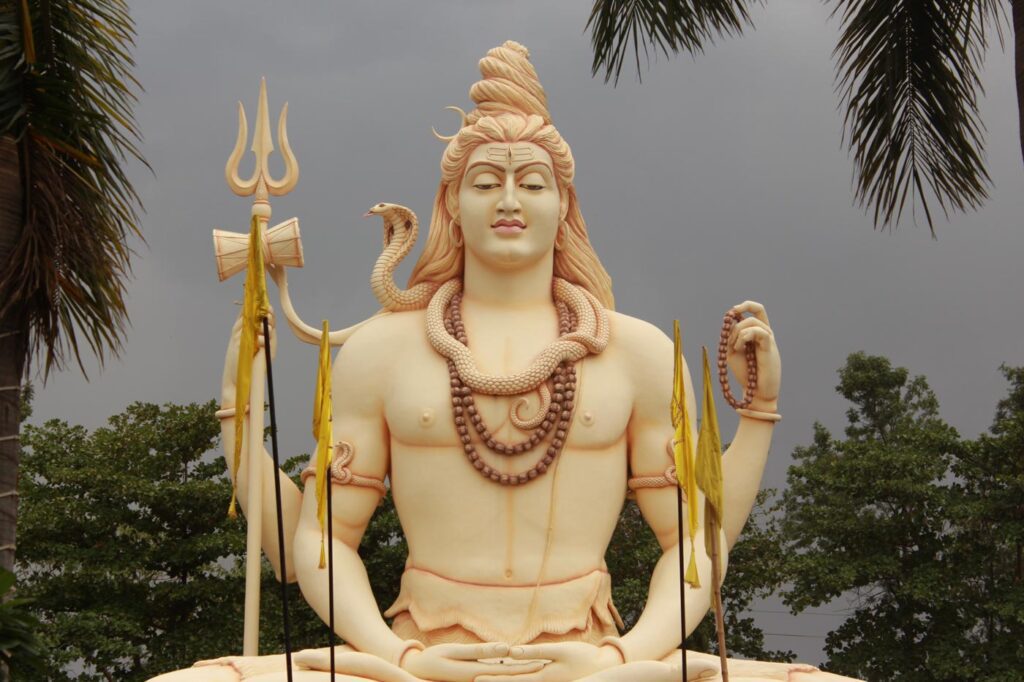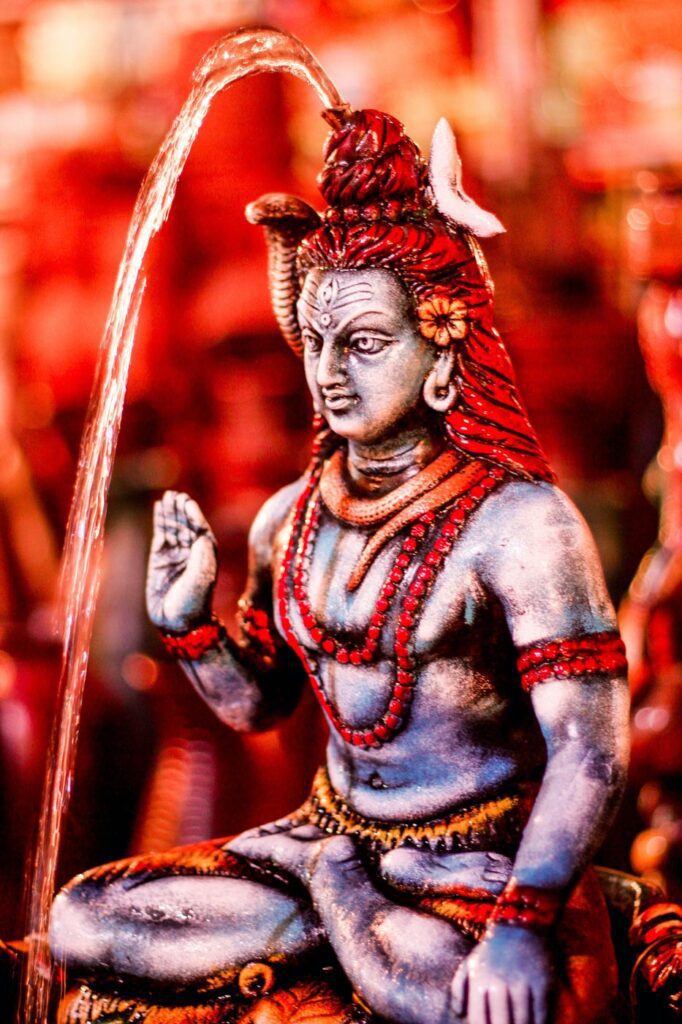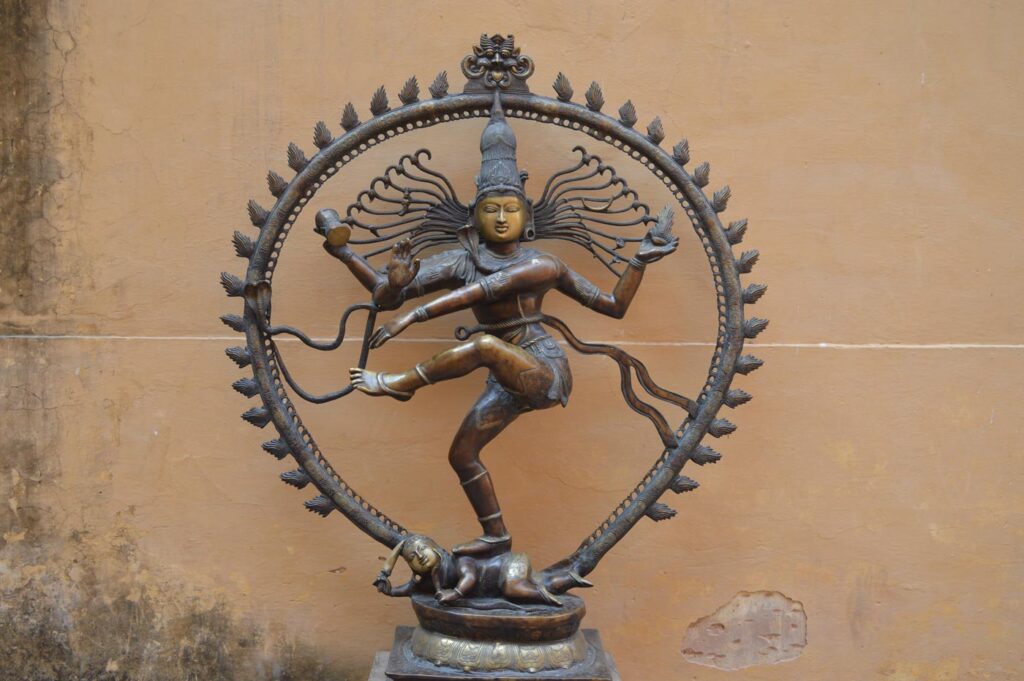Nataraja: the divine cosmic dancer-Vol I
Nataraja is depicted as the Hindu God Shiva in the form of a divine cosmic dancer. The dancing of the Tandava by Shiva is knowns as ‘Ananda-Tandava.’ Shiva as Nataraja is doing Ananda Tandava which brings out the framework of the discipline of the environment, aesthetics, Purana, philosophy, sculpture, science, and ritual into a single arena.

Ananda Tandava of Nataraja
It is a dance of bliss where the intrinsic nature of Shiva emerges in the purest form. According to mythology, Shiva first performed Ananda Tandava to enlighten some sages who had been so immersed in their scholasticism that they had forgotten about the existence of God.
Ananda Tandava of Shiva denotes five divine acts – the creation, sustenance, dissolution, concealment, and bestowment of grace. The dance of bliss is said to have been witnessed by Lord Vishnu.

Nataraja
Nataraja, as told earlier, is depicted as Hindu God Shiva. His dance is called Tandava. The word ‘Nataraja’ is a Sanskrit term where ‘Nata’ means to act, drama, and dance, and ‘Raja’ means king or Lord.
It can be roughly translated as lord of dance or king of dance. In Tamil, he is also known as ‘Sabesan’ which splits as ‘Sabayil aadum eesan’ which means ‘the Lord who dances on the dais.’
This cosmic dance symbolizes the cosmic cycles of creation and destruction as well as the daily rhythm of birth and death.
Depiction or symbols of Nataraja

The Nataraja’s sculpture is not just a symbol. It is taking place within each of us, at the atomic level. The ‘Agamas’ proclaim, “the birth of the world, its maintenance, its destruction, the souls’ obscuration, and liberation are the five acts of his drama.
The Nataraja dances within the universe of illusion. The locks of his hair stand out in many strands as he whirls around in his dancing frenzy. His locks are decked with a crescent moon, and a skull and are interspersed with the sacred “ Goddess Ganga.”
The unkempt hair of Nataraja
Lord Shiva’s unkempt hair denotes rejection from the materialistic world. This contrasts with his role as a ‘grihastha or householder with his family.’
Fiery ring of Nataraja
The fiery ring surrounding Shiva represents the universe with all its illusions suffering and pain. The outer edge is fire and the inner edge is the waters of the ocean. The fiery ring is known as ‘Prahabhamandala.’
Goddess Ganga of Nataraja
She is shown here nesting in Shiva’s dreadlocks. The river Ganga that flows in Nataraja’s hair originally flowed in heaven. When the heavenly Ganga was needed on earth, she was unwilling to fall on earth because she realized that her fall will be too much for the earth to hold. Hence, Shiva as Nataraja agreed to break the violent power of the sacred Ganga’s fall by catching her in his tangled hair.
Crescent moon of Nataraja
The Crescent moon in his matted hair keeps ‘The Kama, the god of nightly love, alive. Through the waxing and waning of the moon, Shiva creates different seasons and rejuvenates lives.
The coiled snake (Kundalini Shakti) of Nataraja
He wears a snake coiled around his upper arms and neck symbolizing the power he has over the most deadly creatures. Snakes are also used to symbolize the Hindu religious doctrine of reincarnation. Their natural process of molting or shedding their skin is symbolic of the human souls’ transmigration of bodies from one life to another.
Damaru of Nataraja
It symbolizes the creation, placed on the upper right hand like an hourglass drum. It is beating the pulse of the Universe. It also provides the music which accompanied Shiva in the Tandava. The damaru also represents male and female prospects of life.
Acknowledgement: various books, websites and pexels
You may like to read Indian Classical Dance article.


Excellent
lovely
It’s really wonderful article.
God bless you
waiting for the next volume
Good research work
wow that’s amazing.
Waiting for other volume.
lovely article